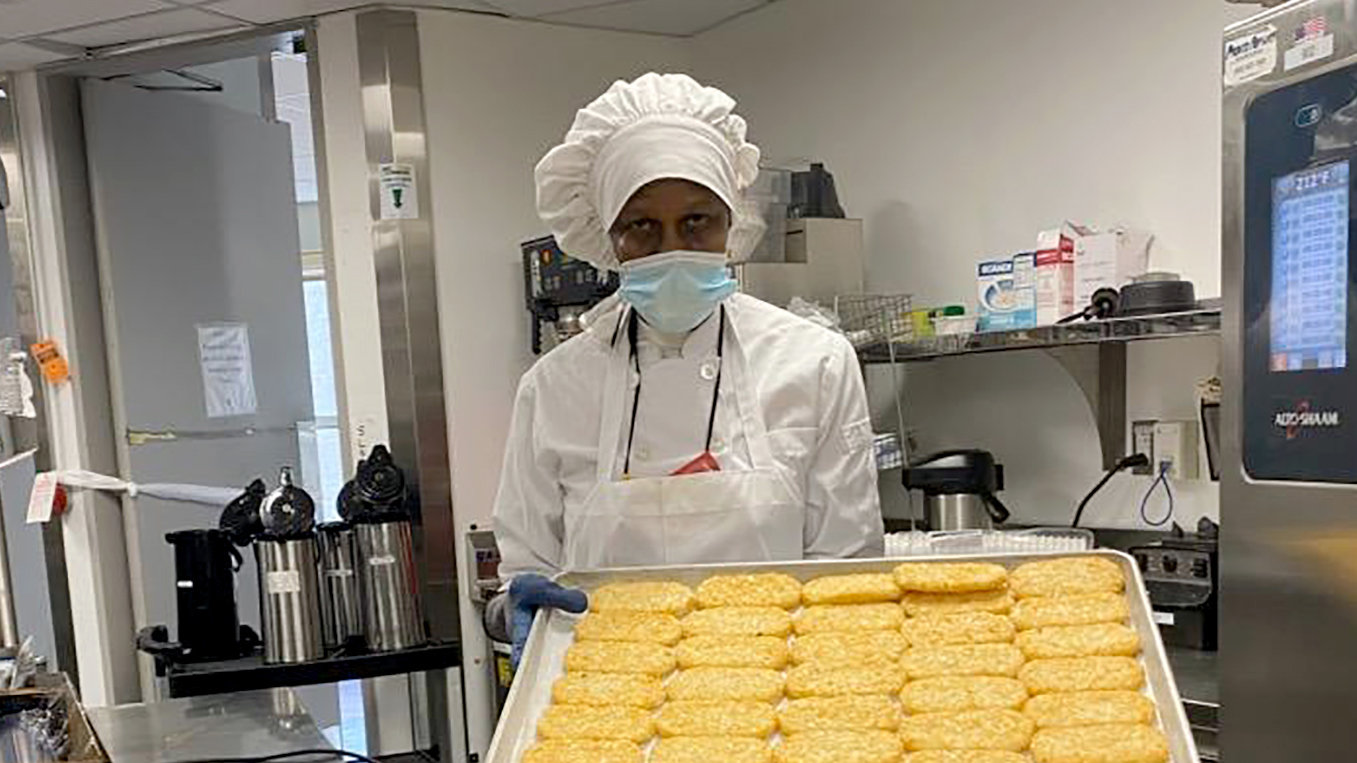Listen hard.
In the pandemic season of her time, Julia Neill Sullivan, age 71 or 72, marched pots of food from her hearth across a stony field on a remote peninsula along the west coast of Ireland.
The global influenza of 1918 and 1919 had made its way into a small house in County Kerry, miles beyond the last electric pole. It was the home of the youngest of Julia’s 13 children, Mary, who had the flu, as did her husband, Paddy, and their seven children, all under the age of 10.
No wonder it killed upward of 50 million. The family normally ate from the earth and sea, but were so weak no one could gather food or even draw water at the spring.
Nan the Point was back the next day with more.
Listen again.
By 4:30 a.m. over the past nine weeks, Glenda Charles, 58, has risen from bed and dressed in her black uniform slacks, a white chef’s top. Wearing comfortable black shoes she bought online for her hard-to-fit size, she walked four dark blocks to a hospital on Fort Washington Avenue in upper Manhattan, part of the campus of NewYork-Presbyterian Hospital/Columbia University Medical Center.
At 5 a.m., a half-hour before her shift officially began, she was in the ninth-floor kitchen to count the eggs she would scramble, measure the oatmeal she would stir, lay out the French toast on the griddle.
Although her title with Local 1199 of the Service Employees International Union is “first cook,” the COVID-19 pandemic pared her crew to about a third its normal size. She cooked. Cleaned. Washed dishes. Fixed trays. The work days ran 12 to 14 hours.
How many days a week? She considered. A vacation scheduled in March to her homeland of Georgetown, Guyana, was canceled.
“I was off last Saturday,” Charles said. “And this Saturday. Two days since the pandemic.”
Walking home, she prayed for strength. Every other day, she skipped the elevator and climbed four flights to her apartment. “To leave the stress in the stairs and don’t bring it into the house,” she said. At home with her is a disabled son. She has three other children, and eight grandchildren who fretted about their nana.
“The first week, I had a panic attack, I said, ‘Calm yourself down, there’s nothing you can do about this,’ ” Charles said. “Just do what I love to. Make sure the patients have the right nutrition.”
Hospital kitchens everywhere are congregations of predawn travelers.
/cloudfront-us-east-1.images.arcpublishing.com/tronc/GVNIC32H3RGD3LBADVHZAVLVCM.jpg)
Chicago Tribune pages from 1918 show eerie similarities between coronavirus and Spanish Influenza
Sara Kaur starts her shifts on the Bellevue food line at 6 a.m., a job she found after one of her sons was born in the hospital, and after she had taken an English class in hope of sanding down the lilt she brought from her native Punjab. “The body needs food to work normally, to keep you alive,” Kaur, 46, said. “That’s why we’re here.”
Her husband, a cook in an Indian restaurant, was laid off in March. Their two sons have been home from college. She walks to work.
Each tray for 600 patients must be eyeballed: Were diabetics getting the right meals? The low-sodium foods going where they needed to?
“This is our house,” Kaur said. “The families cannot come here. We are the family.”
Back in late February, Michele Murphy Trifari thought through what a pandemic would mean for Lincoln Medical and Mental Health Center in the Bronx, where she is the director of food and nutrition. An extra 200 patients, OK.
“But what if all the truck drivers get sick and we couldn’t get our food deliveries?” she said. She laid in canned foods that could be opened and fed to the patients even if there were no water or power.
Another thing: If patients were isolated, that meant only disposable dishes and cutlery. So she ordered cases of that. And COVID-19 was a respiratory disease: Patients might not eat by mouth. She stocked up on tube feedings.
“All of a sudden it turned from 34 ICU beds to 140 out of nowhere,” Murphy Trifari, 65, said.
Before the city woke, she drove to the Bronx from Queens, where she was raised, the eldest of five children of a nurse and a firefighter. Her Lincoln people got out of the subway at 149th Street while it was still dark. Attendance was better than 95%, she said.
“They were troopers,” she said.
Much like Nan the Point, long time gone.
She, it turned out, saved the lives of the seven grandchildren. Her daughter, Mary, and her husband, Paddy Dwyer, survived to have five more children. The grandchildren of Nan the Point in just that one house would go on to issue 45 of their own offspring.In times to come, when we are all gone, people not yet born will walk in the sunshine of their own days because of what women and men did at this hour to feed the sick, to heal and to comfort.
As it happens
Get the latest updates on Coronavirus and other breaking news events happening across Connecticut
Listen once more for that footfall, nearby.
I am one of the 45 great-grandchildren who came from the house that did not die out because Nan the Point left pots of food on a rock, upwind.
Listen for the tread of Glenda Charles and Sara Kaur, Michele Murphy Trifari and Nan the Point, coming and going: life on the march, before the sun comes up.
—
My thanks for family research and lore provided by Marian Dwyer, Seán Ó Hearcáin and Brian Dwyer, three of Nan the Point’s great-grandchildren.
c.2020 The New York Times Company




